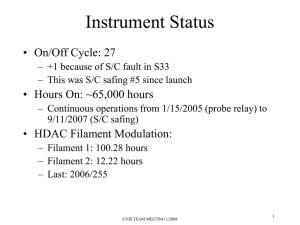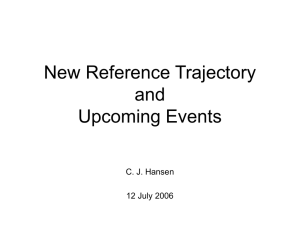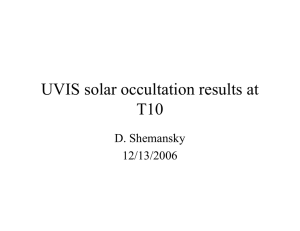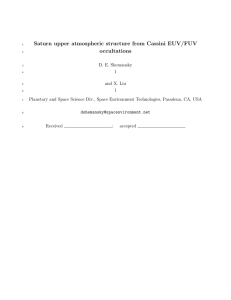Titan mass density at 950 km altitude from EUV/FUV occultation measurements D. Shemansky
advertisement
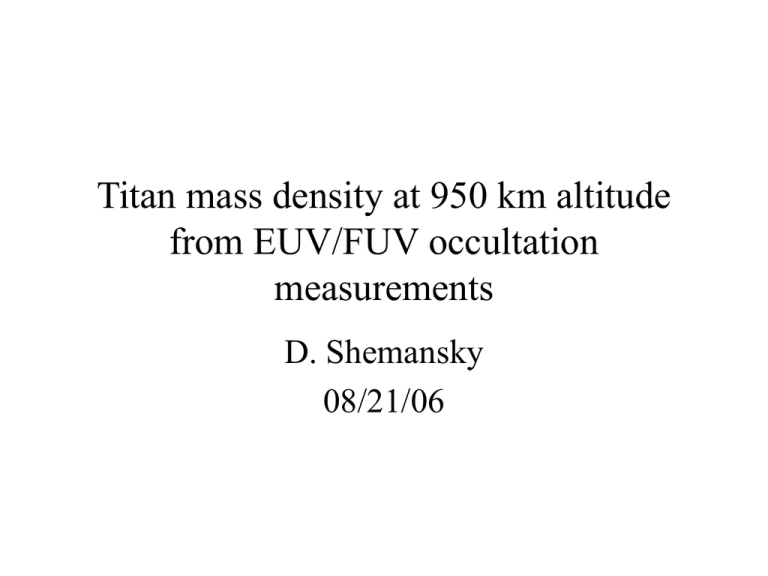
Titan mass density at 950 km altitude from EUV/FUV occultation measurements D. Shemansky 08/21/06 Results from Voyager and Cassini UVIS occultations • The attached figures show the derived densities from the Voyager solar occultation (published) and the Cassini UVIS results to date for CH4 and N2 as a function of latitude of the impact parameter at 950 km. The first figure shows CH4 and N2 number densities. The second figure shows mass densities and includes the results reported from INMS. • The UVIS results are from two stellar occultations at TB and the solar occultation egress at T10. The values are interpolated to 950 km and corrected for integration interval. uvis_occ_950_lat Figure 1 Altitude 950 km 10.0 CH4 X 10-8 N2 X 10-10 Scaled number density (cm -3 ) 9.0 8.0 Voy_Verv_ing 7.0 TB_lsco 6.0 5.0 4.0 TB_avir T10_dat_phot Voy_Verv_egr 3.0 Voy_Smith_ing 2.0 T10_sol_model Voy_Verv_ing Voy_Verv_egr 1.0 0.0 -90 -70 -50 -30 -10 10 Latitude 30 50 70 90 Summary of properties: Figure 1 • The CH4 values from the UVIS TB and T10 occultations show variability of about 25%. There is no clear indication of latitude dependence. The Vervack et al results near the equator straddle the UVIS data. The ingress result at Voyager is regarded as more reliable. The N2 densities from Cassini and Voyager indicate no latitudinal variance within measurement uncertainty. The higher N2 density from Smith etal is probably caused by lack of correction for the inclusion of CH4 extinction, and the Vervack et al result at 2.7 deg latitude should be given higher weight. mass_dens_lat Figure 2 Altitude 950 km 16 INMS_TA 14 (10 -10 kg m-3) 12 INMS_TB Voy_Smith_ing 10 INMS_T16 8 Voy_Verv_ing T10_sol_model Voy_Verv_egr 6 INMS_T5_CA 4 2 0 -100 -80 -60 -40 -20 0 Latitude 20 40 60 80 100 Summary of properties: Figure 2 • The Voyager results near the equator (if the weight of the values is placed on the more recent Vervack et al analysis) show very little deviation from the UVIS value at –60o. The occultation results in the –60o to 2.7o latitude range fall between the in-situ INMS values above 70o latitude. My conclusion from these results is that no clear long term latitudinal dependence of mass density can be inferred from the current collection of instantaneous derived values, if the results shown here are taken uniformly seriously. • Tabulated results from the UVIS occultations are attached with notes.


